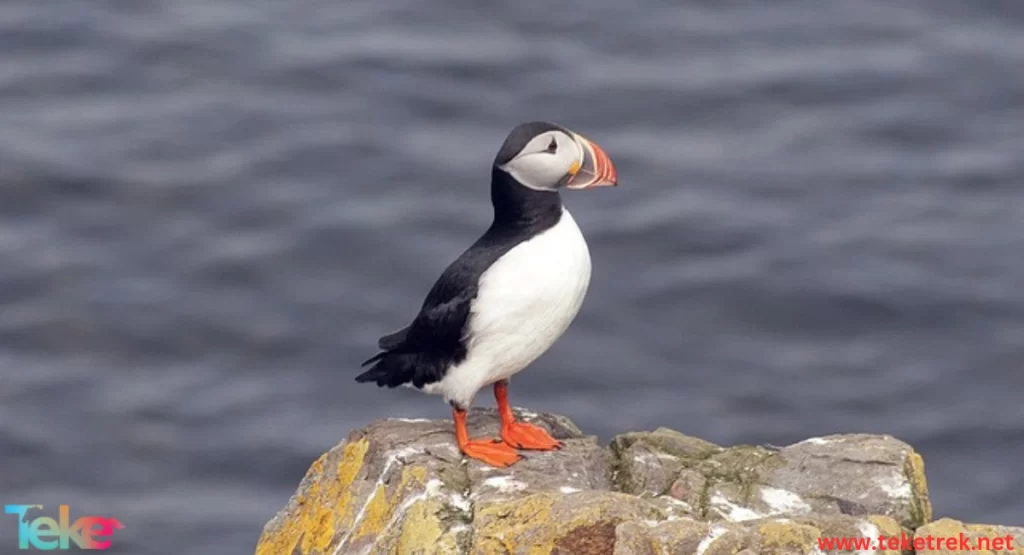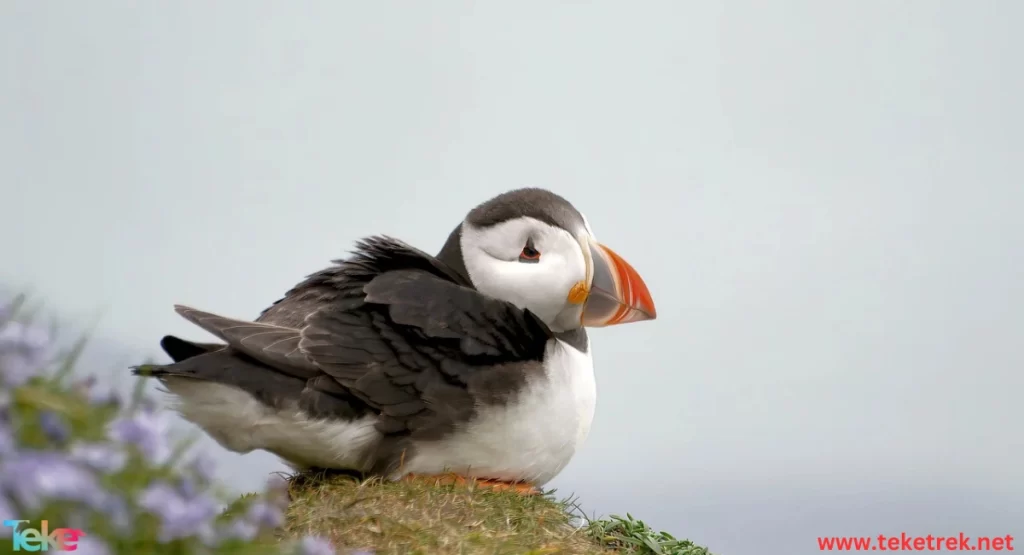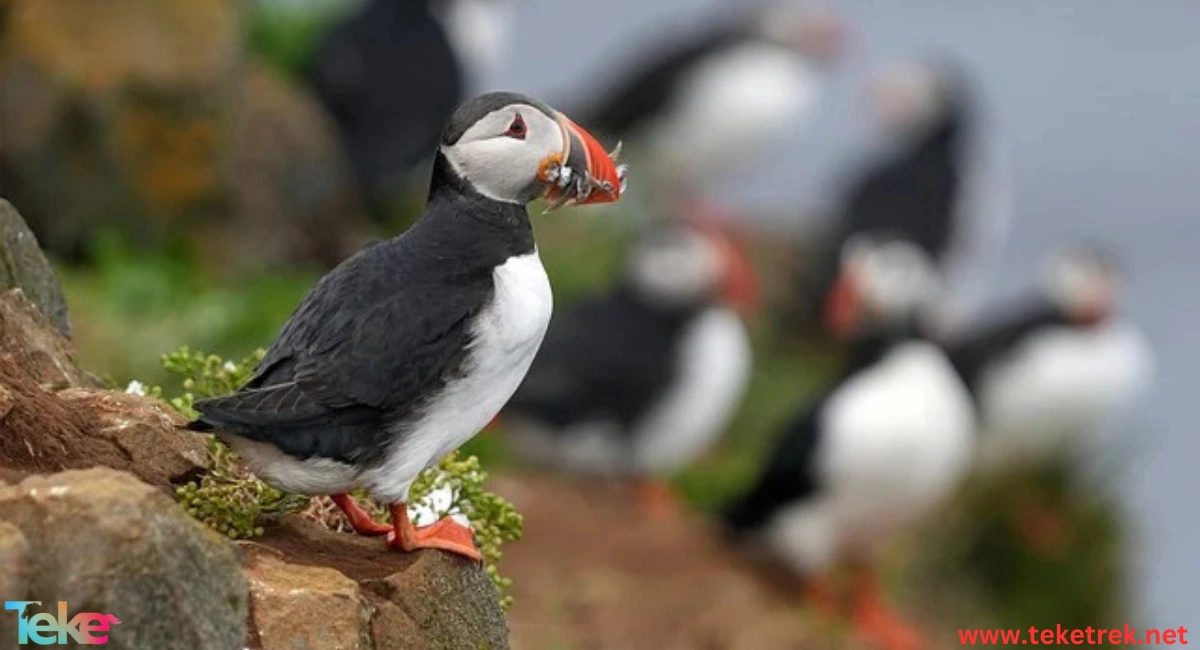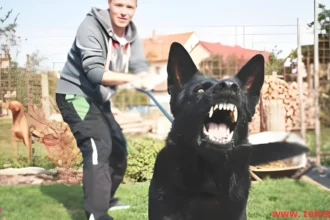The puffin bird, known as the sea clown, below we talk more about it and how it lives, reproduces and feeds.
In this Article about Puffin in TekeTrek Website, we will introduce you to the most important information related to this object. Follow along with us.
About puffins
It flaps its wings in flight to stay aloft, but underwater they become powerful fins that allow it to hunt small fish.

Food for puffins
The puffin is a black and white marine animal with a huge multi-coloured beak that spends the winter at sea.
Puffins feed largely on fish, in addition to shrimp, other crustaceans, molluscs, and polychaeta worms, especially in coastal waters.
- When hunting, it swims underwater using its semi-extended wings as paddles to “fly” through the water and its feet as rudders.
- It eats small-bodied fish up to 18 cm long, and its prey is smaller, up to 7 cm long.
- The adult bird eats 40 fish a day on sand eels, herring, capelin and sprat.
- It catches fish and may swallow the smaller ones when submerged in water, but brings the larger ones to the surface.
- It can catch several small fish in one dive and holds the first fish in its beak with its muscular, grooved tongue to catch others.
- The lower jaws are separated in such a way that they can be held parallel to hold a row of fish in place, held by inward-facing serrations on the edges of the beak.
- It adapts to the excess salt that it ingests partly through its kidneys or through excretion through the salt glands in the nostrils.
Puffin habitats
They may nest in crevices and between rocks and gravel, competing with birds and other animals for burrows. They can dig their own hole or move into a pre-existing system dug by a rabbit and have been known to peck and dislodge the original inhabitant.
Reproduction in puffins
The puffin is a monogamous animal. It spends the winter alone in the ocean. If it meets its former partner, they face each other when they return to their previous nest. Then they improve the burrow. One of them stands outside the entrance and the other begins digging, expelling quantities of soil and gravel.
- Puffins nest in colonies on the tops of grassy slopes. Some birds collect stems and parts of dry grass as nesting material, then take a beak full of underground material, then take it out again and dispose of it.
- The birds reconnect across bills, with the pair approaching each other, both shaking their heads, then wagging their beaks together, occurring frequently, and the birds continuing to bill, to a lesser extent.
- They become sexually mature at the age of 4 to 5 years.
- The male spends his time guarding and maintaining the nest, while the female takes care of incubating and feeding the chick.
- Egg laying begins in April in colonies further south.
- The female lays a white egg annually, but lays another when it is lost.
- The egg is large, averaging 61 mm.


Interesting facts about puffins
The most important facts about puffins:
- Puffins use their wings as paddles to “fly” through the water and their feet as rudders.
- An adult puffin eats 40 fish a day.
FAQ
- Where do puffins nest?
Puffins nest in crevices and between rocks and gravel, competing with birds and other animals for burrows.
- What do puffins feed on?
It feeds on fish, shrimp, crustaceans, mollusks and polychaete worms.
- Where can puffins be found?
Puffins can be found in the Northern Hemisphere, primarily in the North Atlantic and North Pacific oceans.
- What are 5 facts about puffins?
- Puffins are excellent swimmers and can dive up to 60 meters underwater.
- They are known for their colorful beaks, which are brighter and more colorful during breeding season.
- Puffins mate for life and return to the same nesting sites each year.
- They are skilled flyers, reaching speeds of up to 88 km/h.
- Puffins primarily eat fish and are capable of holding multiple fish in their beaks at once.
- Is a puffin a penguin?
No, puffins and penguins are two different species of birds. Puffins are seabirds that can fly, while penguins are flightless birds that primarily live in the Southern Hemisphere.
In short, the puffin is a monogamous carnivorous animal that reproduces eggs and lives among rocks and gravel.
Sources
WIKIPEDIA






